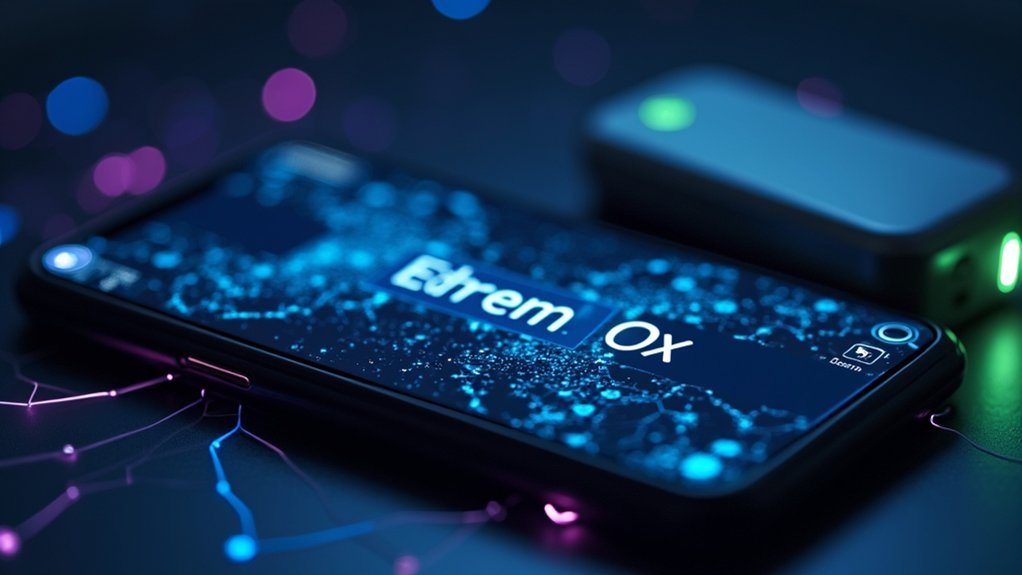LayerZero addresses blockchain’s isolation paradox through a sophisticated interoperability protocol that connects over 50 previously siloed networks. Unlike traditional bridges, it employs Ultra-light Nodes and Decentralized Oracle Networks to facilitate censorship-resistant cross-chain messaging without sacrificing security. The architecture—which mirrors non-custodial wallet functionality—enables seamless asset movement, improves liquidity access, and enhances capital efficiency. LayerZero V2’s architectural refinements further reduce gas costs while maintaining security guardrails, potentially establishing the framework as Web3’s interoperability standard.

Why have blockchain networks remained so stubbornly isolated from one another when their philosophical underpinnings champion decentralization and interconnectivity? This paradox—networks designed for trustless cooperation functioning as digital islands—has hampered the blockchain ecosystem’s evolution until now. Enter LayerZero, an interoperability protocol that elegantly addresses this fundamental contradiction.
LayerZero isn’t a blockchain itself but rather a sophisticated communication infrastructure implemented through smart contracts, enabling disparate networks to exchange information, assets, and executable logic. The protocol’s architecture employs Ultra-light Nodes, Decentralized Oracle Networks, and Relayers to establish secure cross-chain messaging channels—a technological trifecta that maintains security without sacrificing efficiency.
The protocol’s elegant design incorporates immutable endpoint contracts serving as messaging conduits between blockchains, with message libraries facilitating efficient data transfer. This design enables applications to send censorship-resistant messages across multiple blockchain networks. This approach mirrors the functionality of non-custodial wallets like OKX Web3, which allows users to maintain full control of their digital assets across multiple blockchain networks. Perhaps most ingeniously, LayerZero employs Decentralized Verification Networks to authenticate cross-chain communications, a significant improvement over previous interoperability solutions that often sacrificed security for convenience (a devil’s bargain if ever there was one in the cryptosphere).
With over 50 blockchains currently connected through its protocol, LayerZero addresses the market fragmentation that has plagued crypto since its inception. The ability to move assets seamlessly between chains—without surrendering them to centralized exchanges—represents a quantum leap for liquidity accessibility and capital efficiency. Users should note that certain pages explaining technical details may be temporarily unavailable due to compliance with new UK regulations.
LayerZero V2 further refines this vision with architectural improvements yielding enhanced performance and reduced gas costs. The protocol’s configurability allows developers to tailor execution parameters to their specific applications, fostering innovation while maintaining security guardrails.
In a landscape where Bitcoin and Ethereum dominate market capitalization but dozens of alternative chains offer unique capabilities, LayerZero’s interoperability solution may prove transformative. By enabling omnidirectional communication between previously siloed networks, it lays the groundwork for truly borderless blockchain applications—potentially becoming the standard infrastructure for an integrated, interoperable Web3 ecosystem. The blockchain islands, it seems, may finally build their bridges.
Frequently Asked Questions
How Does Layer Zero Compare to Other Interoperability Solutions?
LayerZero distinguishes itself from competitors through its dual-entity validation architecture (requiring both oracle and relayer consensus) – a stark contrast to traditional bridges’ single-party validation models.
This approach simultaneously reduces centralization risks while enhancing security.
Unlike Wormhole’s asset-focused bridging or Axelar’s messaging-heavy mechanisms, LayerZero offers superior scalability via Ultra Light Nodes, which consume less bandwidth while supporting omnichain interoperability across fifty-plus blockchains.
Its developer-friendly infrastructure facilitates ecosystem integration beyond mere token transfers.
What Are the Security Risks Associated With Layer Zero?
Layer Zero faces several security challenges inherent to its cross-chain architecture.
Centralization risks create single points of failure, while shared code vulnerabilities can cascade across connected networks.
The complex interoperability ecosystem—praised for its utility—simultaneously complicates security auditing.
Physical infrastructure remains susceptible to traditional attacks, and weak encryption protocols could compromise the entire system.
Perhaps most concerning is the potential for consensus protocol exploits that, once successful, might trigger domino-effect failures across multiple blockchain networks.
Can Layer Zero Support Non-Evm Compatible Blockchains?
Yes, LayerZero explicitly supports non-EVM blockchains.
The protocol’s architecture—featuring on-chain ultra-light nodes and oracle networks—adapts seamlessly to various blockchain ecosystems.
Currently integrated with over 100 networks, LayerZero facilitates cross-chain messaging between diverse architectures including Solana, Cosmos SDK-based chains, and TON.
This versatility enables applications to function across heterogeneous blockchain environments without requiring extensive code modifications—a significant advancement for projects seeking true omnichain functionality.
What’s the Average Transaction Time Across Different Blockchains?
Transaction times across blockchains vary dramatically—Bitcoin averages 10-60 minutes, Ethereum 15 seconds to 5 minutes (network congestion permitting), Solana boasts sub-second finality, while Cardano settles in 20 seconds.
These disparities—reminiscent of comparing freight trains to supersonic jets—reflect fundamental architectural trade-offs between security, decentralization, and speed.
Importantly, cross-chain operations introduce additional verification layers, with protocols like LayerZero optimizing these processes while remaining constrained by the slowest network in any transaction path.
How Does Layer Zero Handle Regulatory Compliance Across Jurisdictions?
LayerZero tackles the regulatory labyrinth across jurisdictions through a multi-pronged approach: employing its Omnichain Fungible Token Standard to maintain consistent asset representation; partnering with regulated infrastructures like Libre; leveraging zero-knowledge proofs to balance privacy with transparency requirements; and embedding compliance mechanisms directly at the protocol level.
This architecture—which provides a holistic view of global data with minimal trust assumptions—allows assets to move seamlessly while adhering to the peculiar regulatory patchwork that somehow passes for global financial governance.









